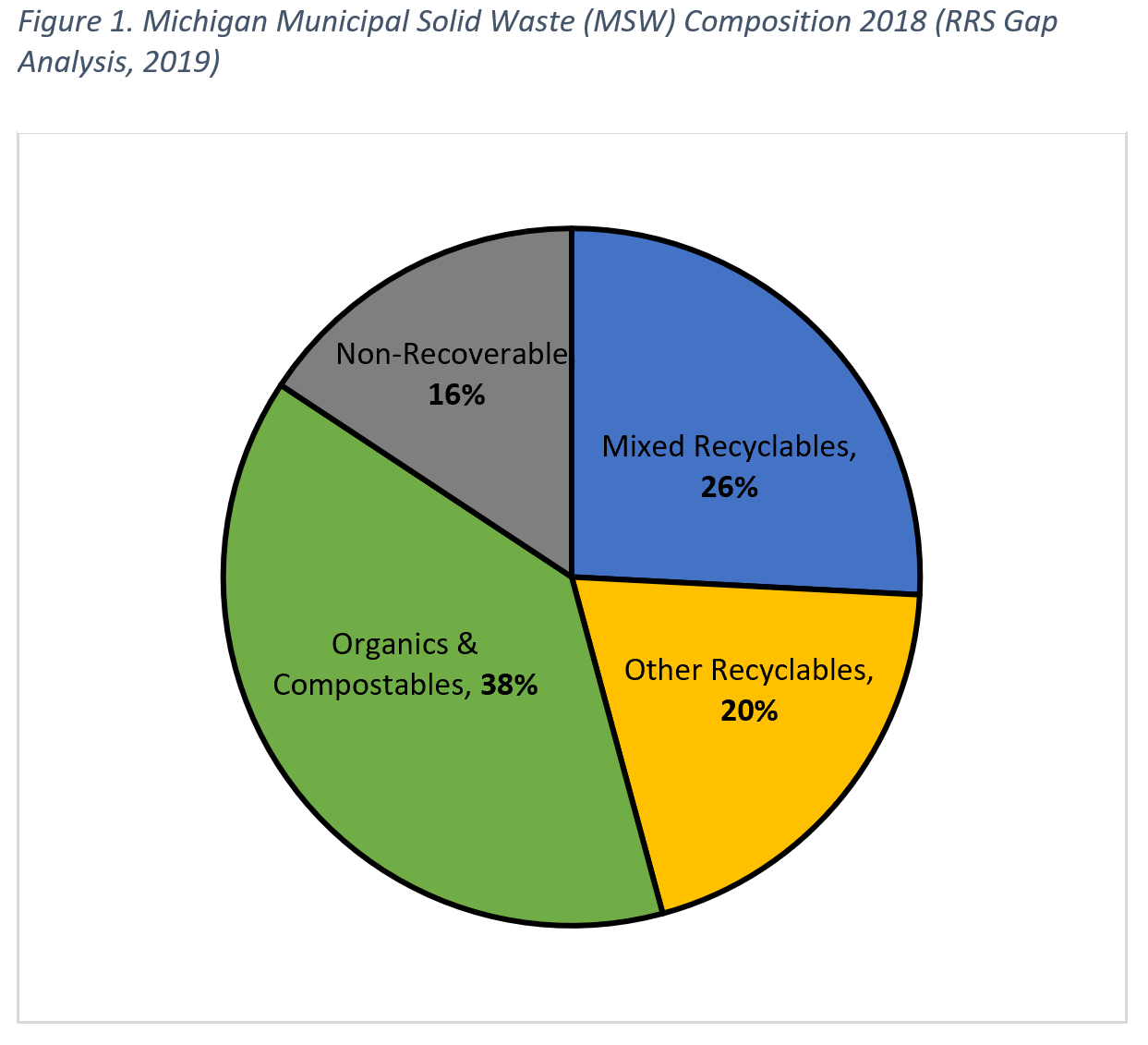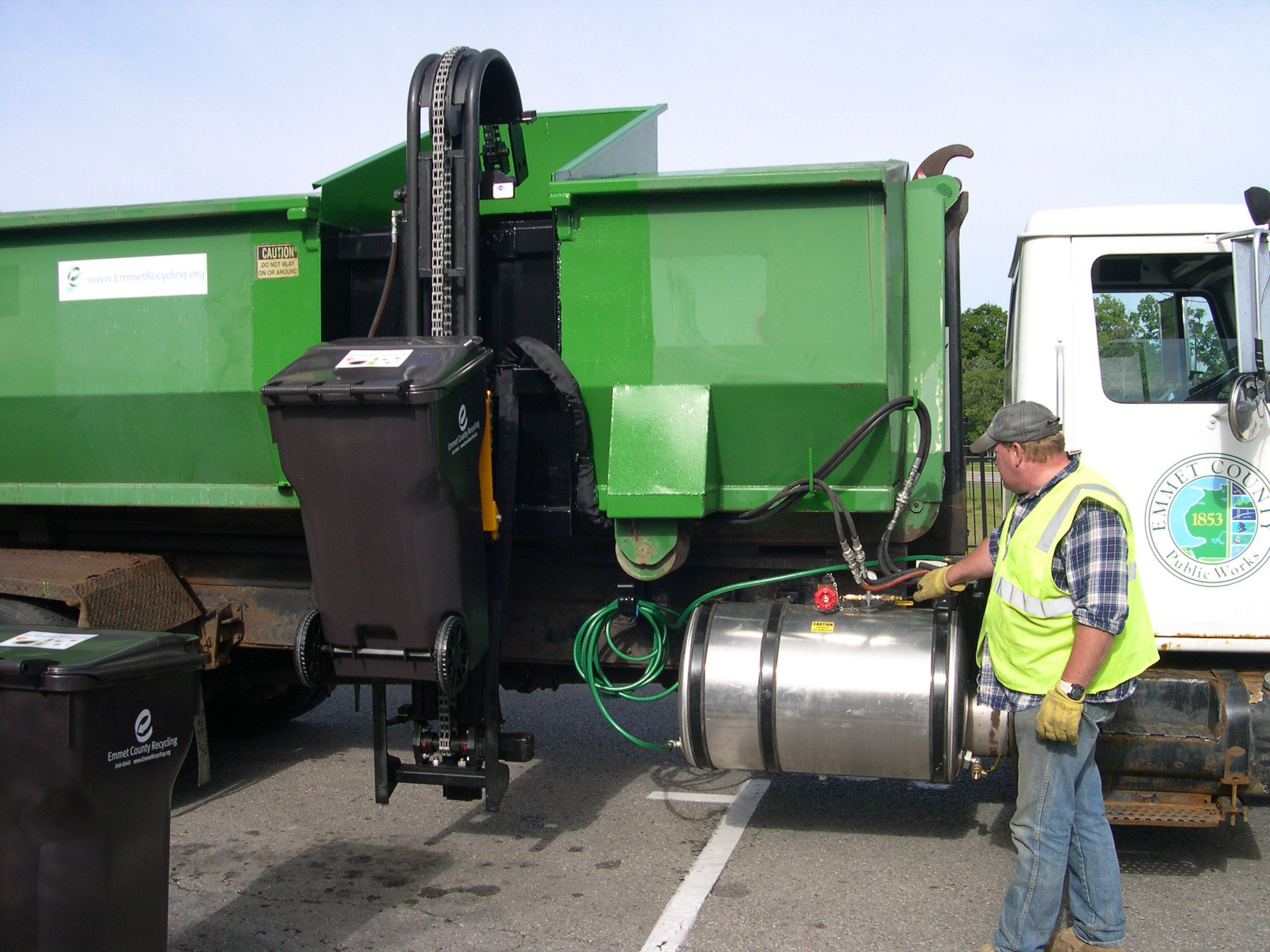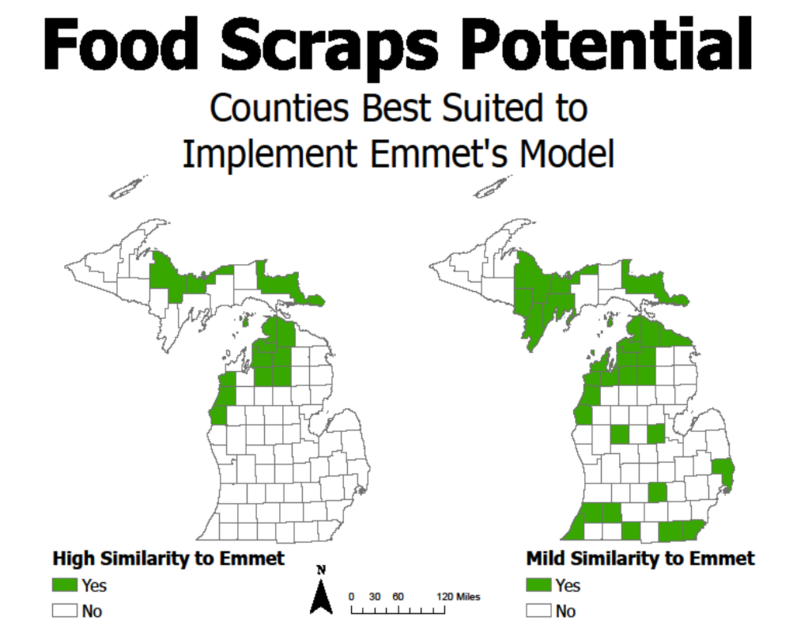Sowing the Future of Food Scrap Recycling: Best Practices from Emmet County’s Commercial Food Scrap Program
The Setting
Emmet County is a rural county in Northern Michigan. The population ebbs and flows with the season, following the trail of tourists seeking Petoskey stones along the shores of the Little Traverse Bay or making fresh tracks on the cross-country ski trail. While the population is modest, its recycling program is anything but.
The program’s parent department, the Emmet County Department of Public Works (DPW) does not rely on tax dollars, instead funding its operations entirely from sales of recyclables and fees for services. The recycling program recovers 60 different materials. 28 day-to-day recyclables are collected via the county’s 13 drop off sites and their curbside collection service, the later serving 60% of the county’s households under contracts with local townships and municipalities. Another 32 materials are collected for recycling at the county’s Pleasantview Road Drop-off Center, for example mattresses, batteries, and tires. Over 80% of county households use the county recycling program.
The Challenge
Michigan disposes approximately 3.4 million tons of organic and compostable material every year. While 340,000 tons of yard waste is recovered each year less than 4,000 tons of food scraps make it into the circular economy. This is illustrated by the fact that only eight out of 83 counties in Michigan have access to programs that process food scraps into compost. The large quantity of food waste disposed in landfills has a significant impact on GHG emissions and is a driving factor behind the State’s lagging recycling rate. Finding ways to divert food scraps from the landfill is a major challenge and a key innovation Challenge track in NextCycle Michigan. Emmet County provides a model that highlights the potential.
The Solution
The county developed a yard waste composting program in 2005. Yard waste is commonly recycled in Michigan due to a 1995 landfill ban on the material. At the time of implementing the yard waste program, food scrap composting was a stretch goal with uncertainty regarding how best to move forward, and whether residential or commercial organics streams would be best suited for a pilot project to explore community engagement.
In 2015 the county initiated a feasibility study, led by RRS, to develop a business case analysis for several iterations of a food scrap recycling program, and specifically helped to design a pilot project to demonstrate community interest and develop programmatic and operational capabilities. The study looked at very specific factors, including the number of trucks needed, capital expenditure, and staffing requirements. It concluded that the program should start with a focus on commercial generators and grow from there.
It was determined that the best way to introduce this program was to test it through a pilot program before rolling it out full scale.
The Results
Following a successful pilot in 2015 the county continued to expand the program’s offerings. It began as a back-of-house (food preparation, pre-consumer), food scrap only program and has matured to include more commercial establishments, zero waste events and some public collection points.
The county offers twice-weekly collection in 64-gallon carts. While the service was provided at no charge in the program’s first year, they now charge businesses per-cart per-pickup to make the program financially viable. Events are pre-certified to include acceptable compostable food service packaging (FSP). Compostable bag liners were successfully added across the program as well. In 2019 over 560,000 lbs of food scraps were recovered from commercial customers, nearly 25,000 lbs from public drop off sites, over 6,500 lbs from carts at local farmer’s markets and over 4,000 lbs from “zero waste” community events. Since the program’s inception the county has recovered over 2 million lbs of food scraps.
The material recovered through the program is processed at a County owned and operated compost site that produces commercially marketed compost. The carbon rich yard waste combined with nitrogen rich food scraps makes for a desirable blend. The site utilizes engineered compost pads on just under five acres of land and is managed with one key piece of equipment – a front loader.
A team of researchers at the University of Michigan evaluated the program and defined three elements to Emmet’s success:
Engagement: Building public trust in the program and communicating the value of the service to the community
Volume: Providing an effective and demonstrable service
Funding: Keeping the program financially viable and able to grow
What’s Next?
There are several next level goals within the program:
Continue to improve infrastructure – both on the collection side and at the composting site
Expand the service to include residential generators in addition to an increasing number commercial customers, zero waste events and public spaces
Expand end markets opportunities. The most popular end markets for Emmet County’s compost are horticulture and agriculture, which can use it to improve soil health, reducing the need for chemical fertilizers that have negative health and ecosystem effects. Compost can also be utilized for water retention purposes, detoxifying contaminated land parcels, roadside revegetation, and for landscaping.
The County’s approach to food scrap recycling can be used as a model elsewhere in Michigan. The map shows other counties with similar demography that could follow a very similar approach. Elsewhere there are still lessons to apply, such as the benefit of making a business case, importance of running a pilot before going full scale, as well as the need to be entrepreneurial and work closely with the community to foster support.
Want to learn more? A more detailed case study published by researchers at the University of Michigan Gerald R. Ford School of Public Policy can be found here.
Photos and graphics:





